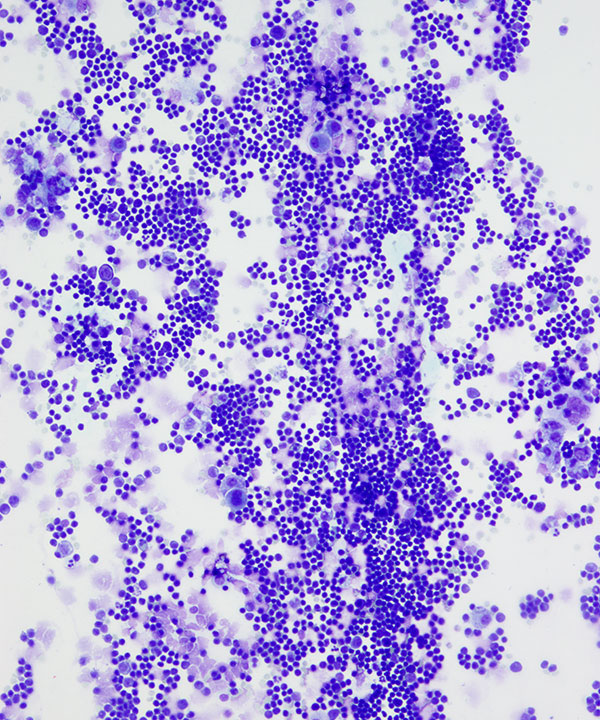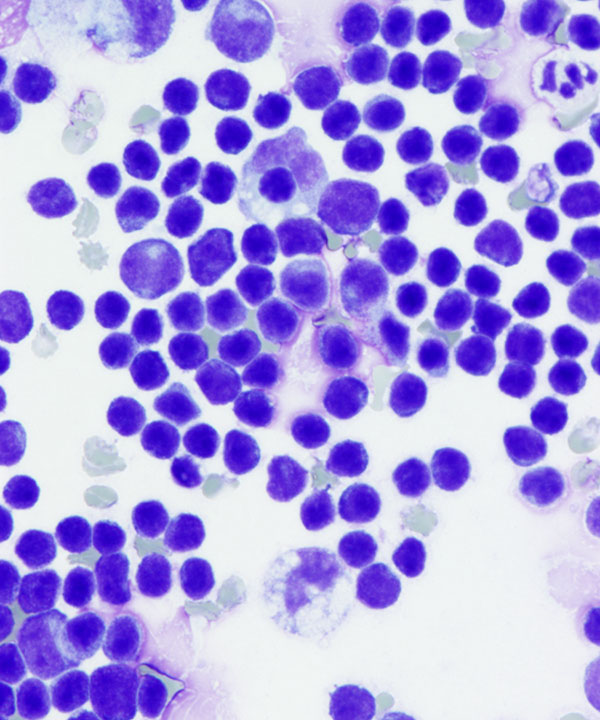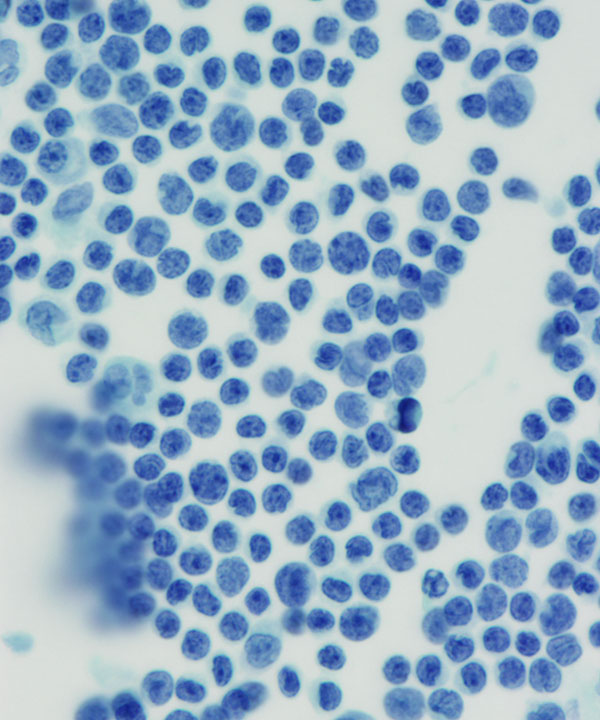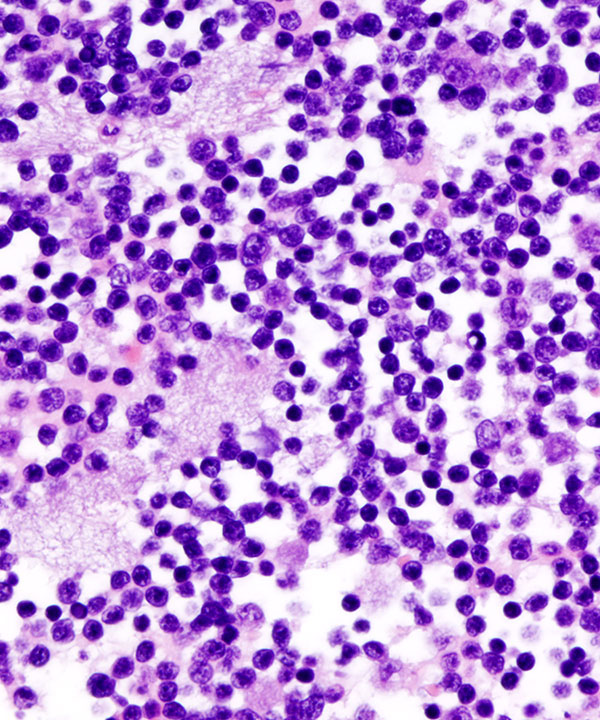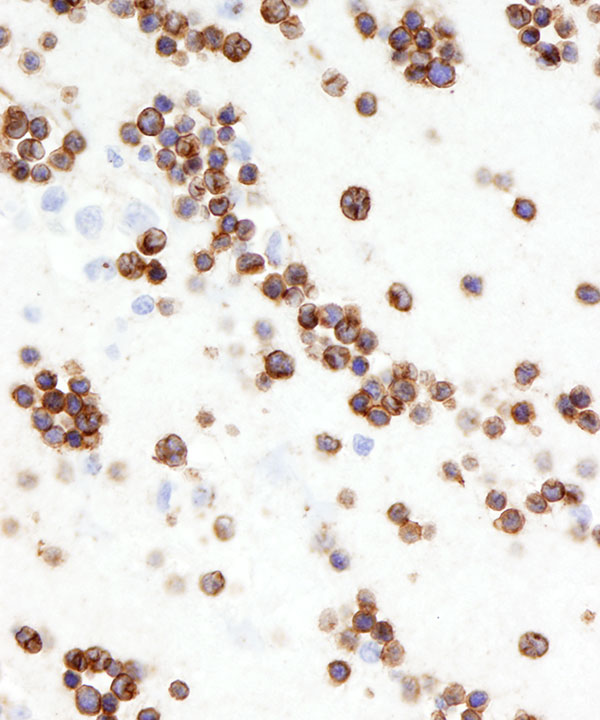Features
• Lymphoblastic leukemia/lymphoma is a neoplasm of lymphoblasts that are committed to either the T- or B-cell lineage and involving blood, bone marrow, thymus, nodal or extranodal sites. Fluids can often be involved secondarily and more often T-cell lymphoblastic lymphoma than B-cell.
• Small to medium sized blast cells
• Hard to differentiate from normal lymphocytes based on size
• High N:C ratio
• Scant cytoplasm
• May have cytoplasmic vacuoles
• Nuclei round to irregular to convoluted
• Chromatin varies from condensed to finely dispersed
• Nucleoli absent to prominent
• IHC: T-cell lymphoblastic lymphomas usually express TdT, CD3, CD7, CD2, CD1a, CD4, CD5, CD8 with frequent co-expression of CD4 and CD8. CD10 may be positive. B-cell lymphoblastic lymphomas express CD19, cytoplasmic CD79a, cytoplasmic CD22, CD10, PAX5, TdT.
• Molecular: TCR clonal rearrangements present in T-ALL, while clonal rearrangements of IGH are present in B-ALL.
• Petrella T et al. Acta Cytol. 1990 Jul-Aug;34(4):580-2.
• Das DK. Diagn Cytopathol. 2006 May;34(5):335-47.
